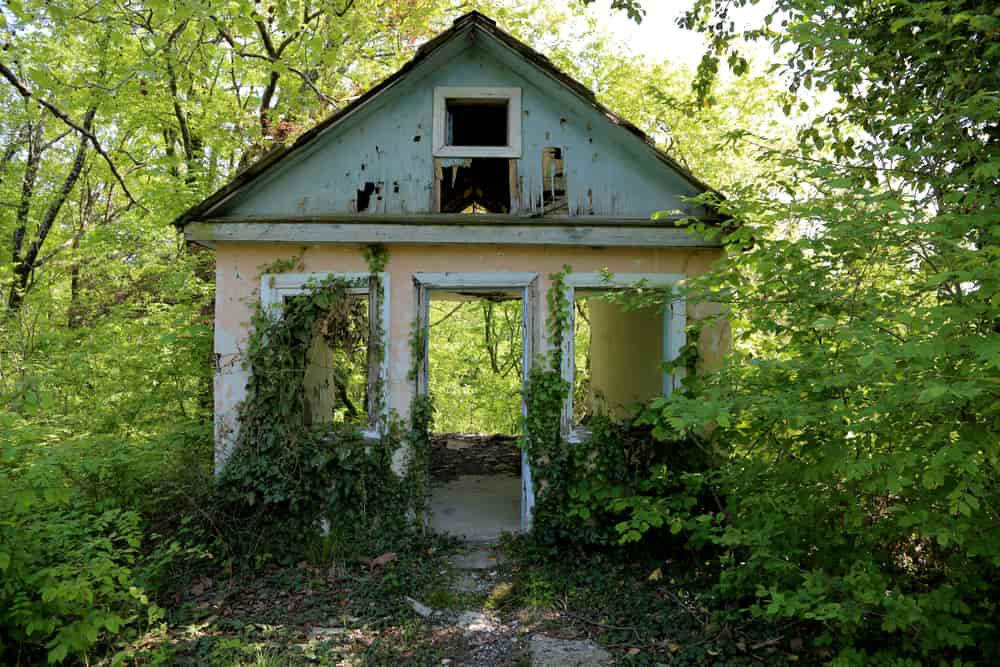Have you ever had a smartphone that still worked but was impossible to use because the manufacturer had rendered it incompatible with the latest technology? The tech world refers to this scenario as functional obsolescence. Functional obsolescence is used in various industries and can take on different meanings by context. Keep reading to find out what functional obsolescence means in real estate, and why investors tend to shy away from it.
What Is Functional Obsolescence In Real Estate?
According to the Merriam-Webster Dictionary, the definition of functional obsolescence is as follows: “obsolescence deriving from a lack of adequate or appropriate equipment, space, or design.”
In the context of real estate, functional obsolescence is used to describe a property that is in the process of becoming obsolete. This could be due to some type of functional impairment or outdated design that could be difficult to fix or update.
As a real estate investor, it’s important to evaluate whether or not your property is at risk for functional obsolescence and how it could impact your bottom line. There are different types of obsolescence, some of which are more detrimental than others. Let’s go over some concrete examples before expanding on the different categories.
Examples Of Functional Obsolescence
The term “functional obsolescence” can seem rather nebulous, especially since it takes on different interpretations by industry. Examples are the best way to help explain when a property could become functionally obsolete. As you search for properties, make sure to be on the lookout for the following common scenarios:
-
Noise pollution: Typically speaking, properties become less desirable when they are located in noisy areas. For example, a house located next to a busy freeway could be tough to sell. City projects can also thwart property value. For example, a city could decide to build a new rail line that runs through residential neighborhoods. Properties located directly adjacent to train tracks could plummet in value, especially when in a construction zone.
-
Disrepair: Physical deterioration and delayed maintenance are considered forms of functional obsolescence in real estate. A property in disrepair can stick out like a sore thumb in nice neighborhoods, thus making it undesirable. Investors should carefully evaluate the cost of salvaging the property and if it would be worth its future resale value.
-
Impracticality: A home could be considered functionally obsolete when it features an impractical layout or other specifications. For example, you’ll likely have difficulty selling a house with four bedrooms but only one bathroom. In another example, a home might feature a perfectly adequate number of bedrooms and bathrooms but is undesirable because the rooms are too small.
[ Do you have what it takes to run your own real estate business? Register for a FREE webinar, where you can learn from experts how to replicate successful business systems. ]

Types Of Functional Obsolescence
The examples above help illustrate how functional obsolescence can manifest in different ways. In general, there are three types of functional obsolescence. We explain each type below to help you understand how different forms of obsolescence can potentially impact your business.
1. Curable Obsolescence
As you may have guessed, curable obsolescence is the type of functional obsolescence that can be “cured.” In other words, a property owner has pathways to remedy any dysfunction occurring at the property. Earlier, we explained how a property in disrepair is considered functionally obsolete. However, it will no longer be obsolete if the property owner repairs it. It is up to the property owner to decide whether the cost of repairs is worth the property’s future resale value.
2. Incurable Obsolescence
In some cases, functional obsolescence is incurable. This takes place when disrepair or dysfunction is impossible to fix or when it’s financially impractical. Oftentimes, external factors such as city projects or busy highways can render a property obsolete. These scenarios are often out of the property owner’s control and should be avoided at all costs.
3. Superadequacy
Superadequacy refers to a situation in which a property is overly improved relative to its surrounding neighborhood. For example, a mansion built in a neighborhood of small two-bedroom bungalows could look gaudy and ridiculous. This demonstrates how the context of a property relative to its surroundings can significantly impact its value. A perfectly beautiful home could be obsolete if it doesn’t make any practical sense based on its location.

How Can Functional Obsolescence Impact Your Property?
Unfortunately, functional obsolescence will have a negative impact on your property value. Here, the real question is the severity of this impact. For instance, the adverse effect of curable obsolescence is typically much less than that of incurable obsolescence. This is because nothing can be done when the obsolescence is irreparable, whereas something curable can be fixed or remedied. Here, an investor should carefully estimate the cost of curing the obsolescence and whether the investment will be profitable.
In the case of superadequacy, the damage is already done. This typically means that the investor had already put in the money to repair or renovate a property and entirely missed the mark based on market demand. If they cannot find a buyer for their property, they’ll be forced to cut their losses.
Summary
The term functional obsolescence is certainly cringe-worthy. As a real estate investor, it’s one of those terms you need to add to your working vocabulary and hope that you’ll never hear it again. In some cases, the obsolescence is completely out of your control. In other cases, you’ll get lucky and there will be a solution to the problem. This drives home the principle that you should always be careful to get an inspection, run neighborhood comps, and analyze each deal meticulously before you invest in a property.
Ready to start taking advantage of the current opportunities in the real estate market?
Click the banner below to take a 90-minute online training class and get started learning how to invest in today’s real estate market!


